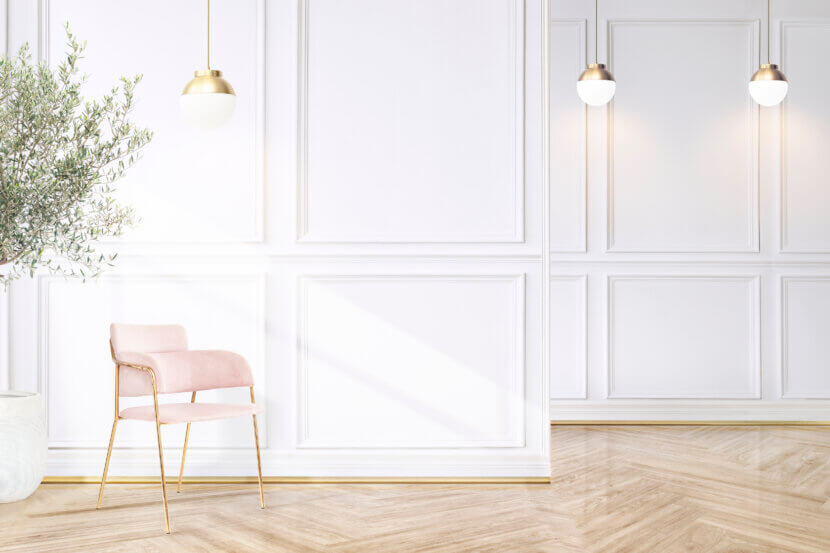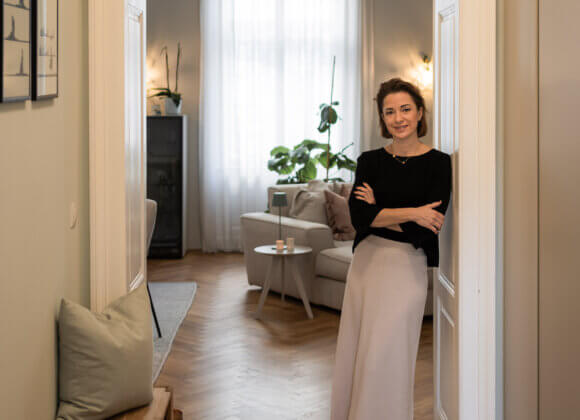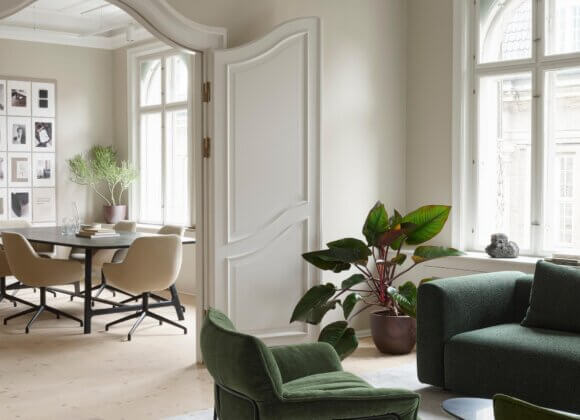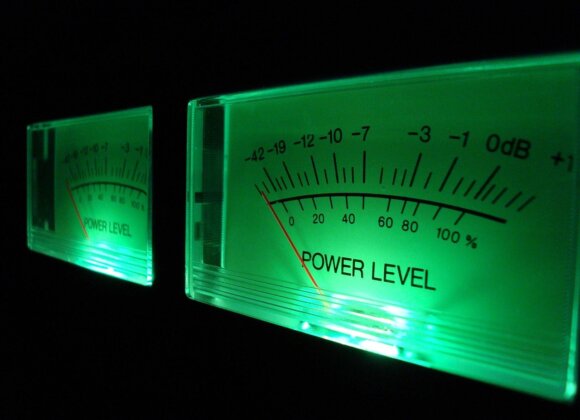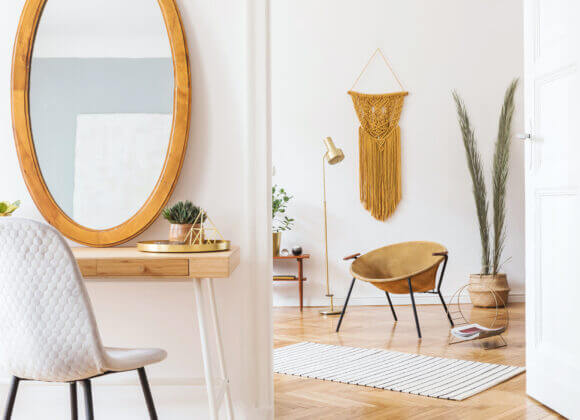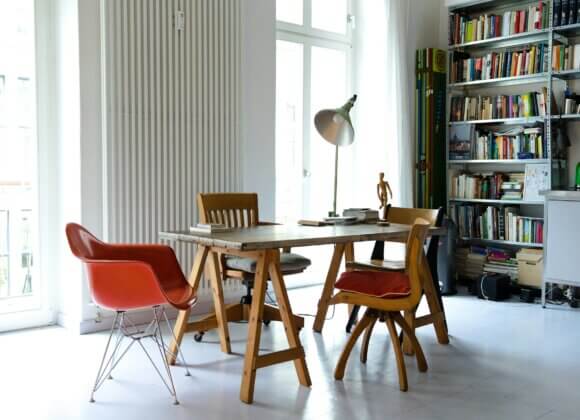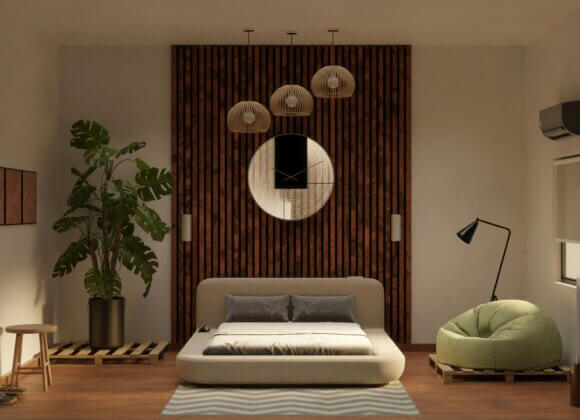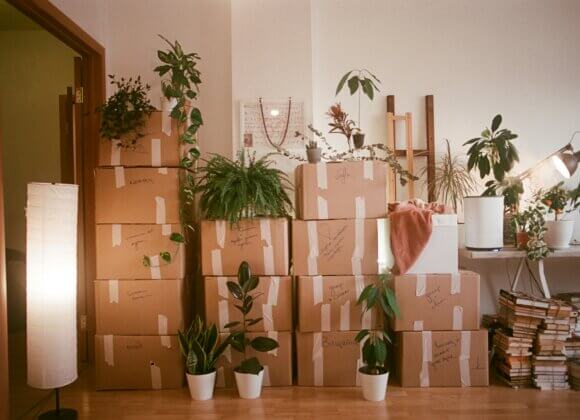Boiserie is back – but not as we know it. The classic wall paneling with French roots is being reinterpreted today: in the form of 3D structures, modern materials and surprisingly versatile applications. Interior specialist Sofia Vrecar, founder and owner of the Viennese interior design studio Daunenspiel, talks about wall design with depth, the rediscovery of historical forms and the charming interplay of light and shadow.
Boiserie sounds like chandeliers, baroque mirrors and floor-to-ceiling double doors – and the term actually comes from the French word bois (wood) and refers to the ornate wall paneling that was mainly found in palaces and city residences from the 17th century onwards. “In Vienna, these elements have been preserved in many old buildings to this day,” says interior design expert Sofia Vrecar. “However, they are often only fragments – unfortunately. Because even the most beautiful stucco moldings were painted over, removed or simply ignored at some point. Too expensive, too elaborate. “There is often a lack of willingness to get involved in the maintenance or complex restoration of such elements,” says Vrecar.
The renaissance begins in 3D
But boiserie is not dead, quite the opposite. Vrecar: “What is understood as boiserie today has only a limited connection with carved wooden panels or stuccoed frames. The new trend is 3D boiserie – textured wall design that plays with depth, shadow effects and light accents. “We are no longer talking about classic panelling,” emphasizes Sofia Vrecar, “but about modern, geometric surfaces with a three-dimensional effect.”
The material? High-quality duropolymer, i.e. a resistant plastic that can be cut, glued, painted and even used in damp rooms. Unlike plaster, which is still used but has become less common, it is light, robust and versatile. “It’s simply stuck to the wall, painted over with latex paint or wall paint – and that’s it. In the kitchen, in the bathroom, as a back wall for the bed – it works everywhere.”
The effect depends not only on the form, but also on the light. “3D boiserie thrives on the interplay of light and shadow. We often work with indirect LED lighting that runs behind the shapes to create depth,” explains Vrecar. “It becomes particularly exciting when you specifically stage individual wall surfaces – behind the bed, behind a mirror or directly by the fireplace, for example.”
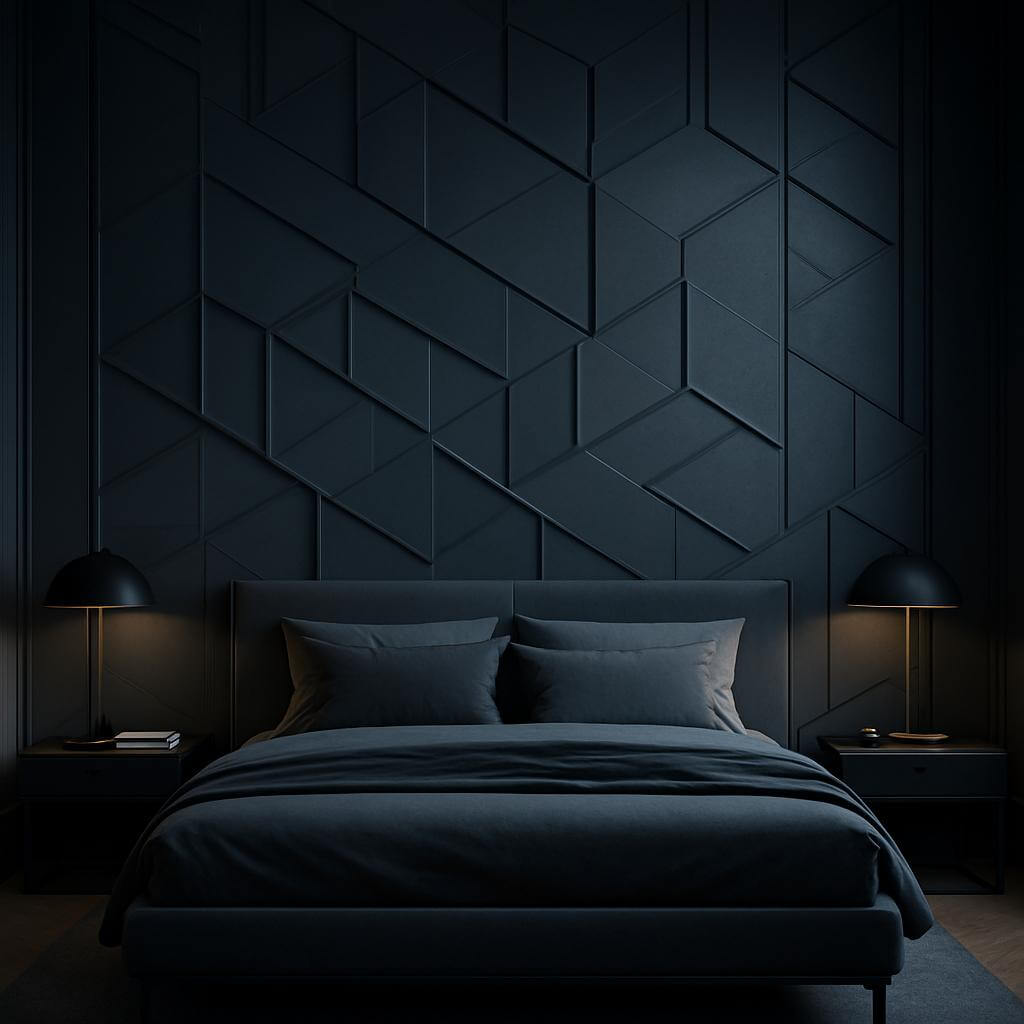
High demand for boiserie
What used to be elitist is now affordable. A stylish 3D back panel for the bed, including materials and installation, costs around 2,000 to 2,500 euros. For that, you not only get an eye-catcher, but a real style statement. “I hardly have a project at the moment where a 3D wall isn’t being used somewhere,” says Sofia Vrecar. “The material has established itself – with design enthusiasts as well as people who simply want to create a special atmosphere.”
The design is particularly popular in small rooms with little furniture, such as guest toilets, bathrooms, entrance halls or corridors. “Where classic decoration on the wall quickly gets lost, 3D boiserie provides structure – it turns a passageway into a room.”
Lots of style for little space: playing with surface, color and light
What makes 3D boiserie so popular is its versatility: it works just as well in monochrome white or beige as it does boldly in dark blue, moss green or terracotta. It can be geometric, organic, playful or clear. “I’ve also had projects where we designed the back wall of the bed in the form of a stylized sun with light staging,” says Vrecar. “It’s almost like a sculpture on the wall.”
Although the modules are made of plastic, they have a high-quality appearance – provided they are well finished and the right colors are used. “It’s like wallpaper: Not every motif works in every room. You need a good eye for proportion, light and room height.”
In new buildings – with rooms often only 2.60 meters high – classic boiserie is usually out of place. 3D panels, on the other hand, fit perfectly. “They don’t need an opulent height, they live from the surface.”
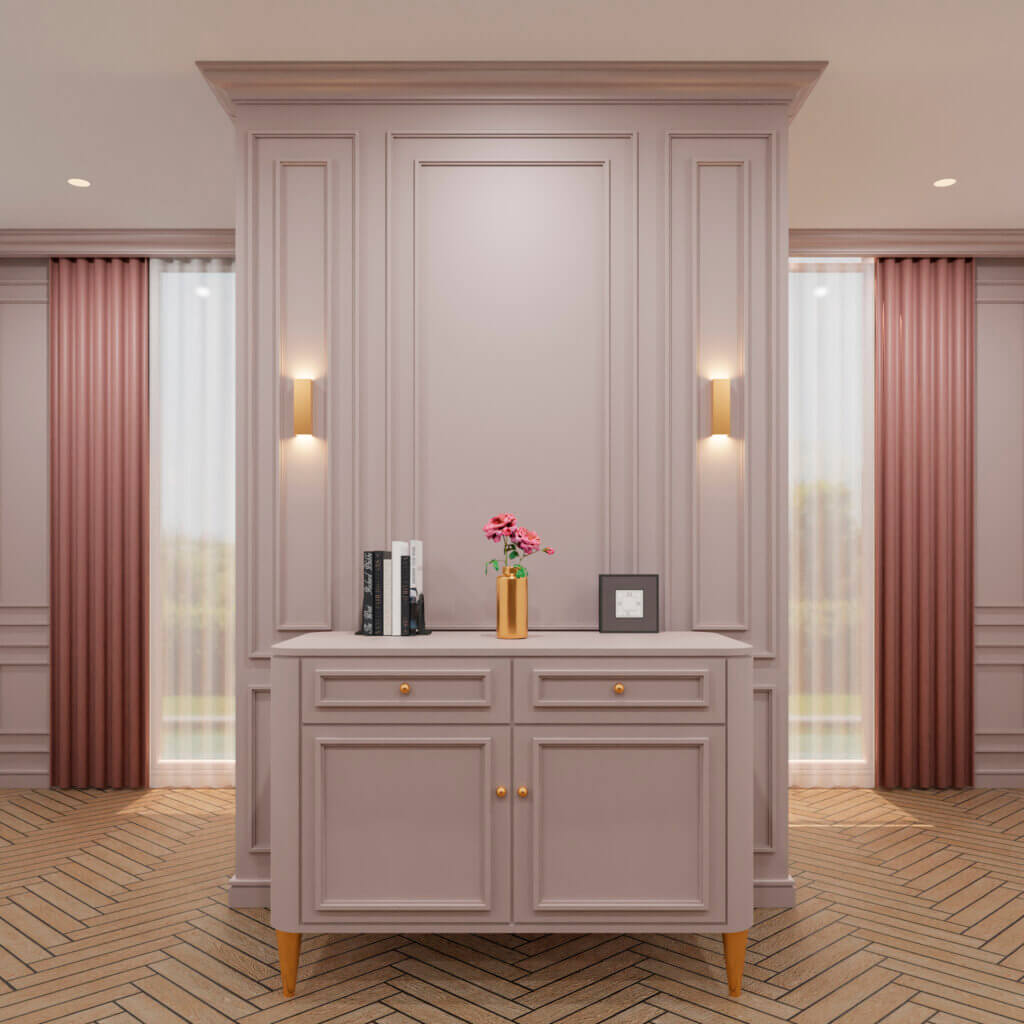
Boiserie is more than a trend: a new approach to interior design
Vrecar is convinced that the new desire for texture and depth is here to stay. “Just as wallpaper has celebrated its big comeback, we are now rediscovering the wall. Rooms should have character again, not just be smooth and functional.”
And: it doesn’t always have to be the whole house. One wall is often enough to set the tone – “like a good picture”. It becomes particularly harmonious when the lighting, choice of color and materials work together. Then a simple wall surface becomes a real statement – elegant, modern and with a nod to history.
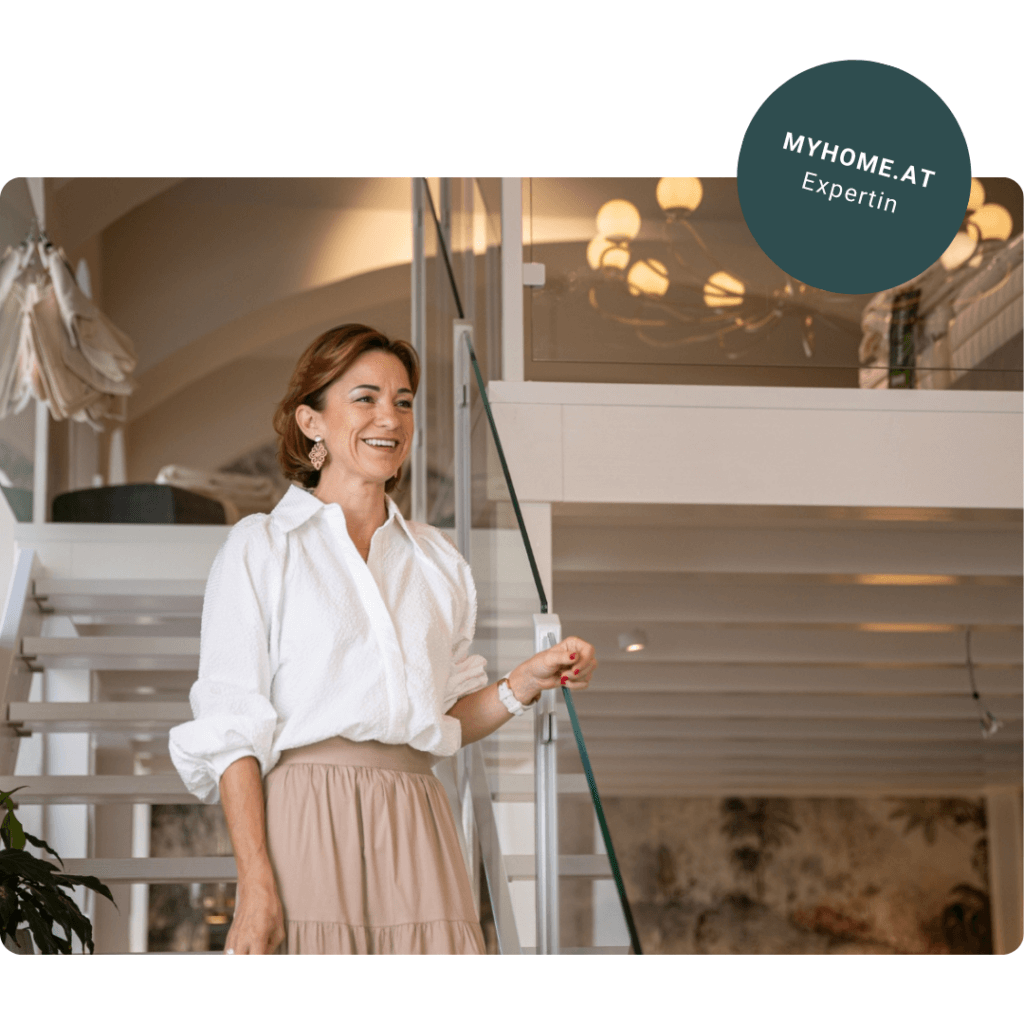
As a creative mind with a pronounced love of high-quality materials and designs, Daunenspiel founder and interior designer Sofia Vrecar translates creative possibilities into suitable colors, shapes and furniture. As host in her own showroom, the native of Lower Austria with 20 years of professional experience in retail management has been inspiring people with designer furniture, favorite brands & the benefits of conscious consumption since 2016.
Related posts:
Natural wall paints for your home
Color psychology in the living room: colors for more well-being


